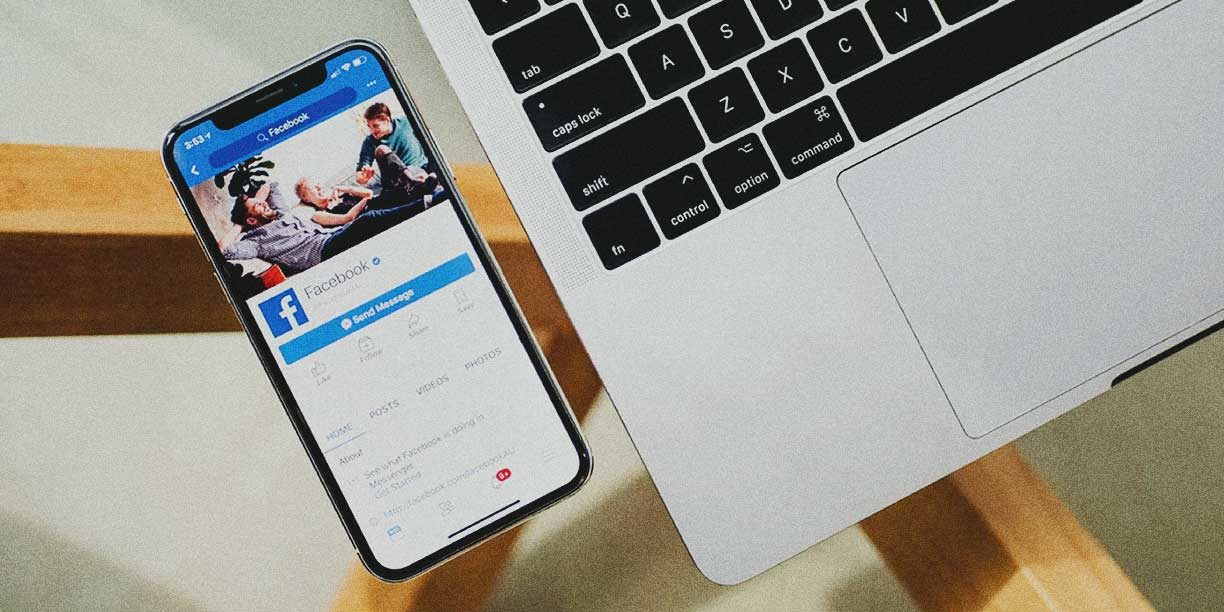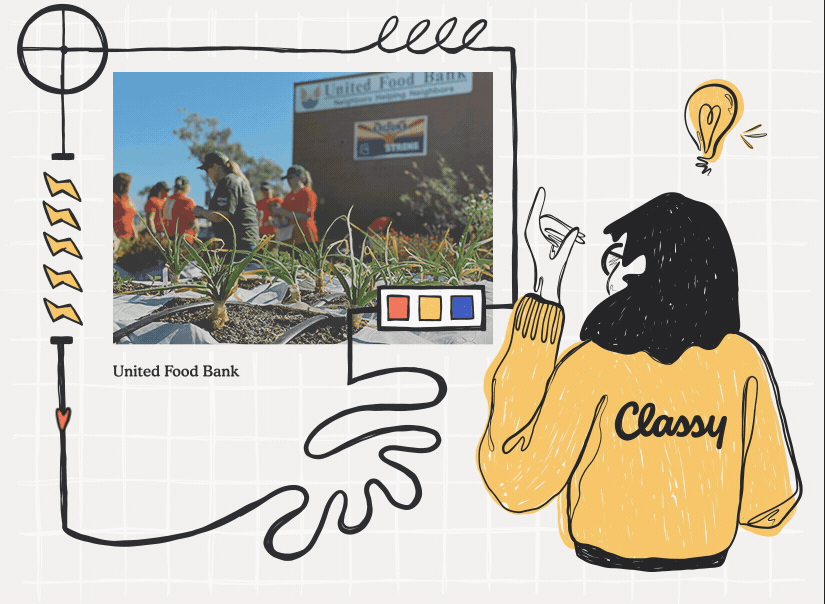Facebook Fundraisers for Nonprofits: Complete How-to Guide

Request a Demo
Learn how top nonprofits use Classy to power their fundraising.
Social media is critical to engaging a wider audience and making new connections with potential donors. Nonprofits, in particular, can benefit from using various platforms to connect with a larger donor base that supports its unique goals.
Our latest data from The State of Modern Philanthropy found that Facebook is a great place to start building exposure, as this social channel drives 83.4% of traffic to fundraising campaigns. Even further, 98% of nonprofit organizations have pages on Facebook, and 48% of all nonprofits believe social media is “very valuable” to their organizational strategy.¹
Get the Latest Donor Acquisition Data
Below, you’ll find a deep dive into Facebook’s tools and opportunities for nonprofit fundraising, essential considerations, and tips for developing a well-rounded approach to fundraising on the world’s largest social media platform.
Learn How to Integrate Facebook and Classy
Facebook Fundraising Tools for Nonprofits
As you build awareness and steward your community of supporters, it’s impossible to ignore platforms like Meta. Meta, the parent company of Facebook and Instagram, reports 1.96 billion active Facebook users.² For perspective, that’s roughly 29% of the Earth’s population.
Meet your supporters in the place they visit daily to interact with others. Let’s start by exploring the specific fundraising tools and donation options Facebook offers nonprofits and individual fundraisers.
Facebook Fundraisers for Nonprofits
Facebook allows nonprofits to fundraise for a cause and provides individuals with the tools they need to successfully fundraise on behalf of a nonprofit organization. Upon expressing interest, users can search for nonprofits they would like to fundraise for.
Once they’ve decided who to fundraise for, users can create their fundraising pages. Personalization tools make it easy to customize items like their cover photo and story. Adding a personal touch helps fundraisers communicate their connection to the cause and motivate their networks to act.
It’s not uncommon to see people fundraise to celebrate significant milestones, like birthday fundraisers or anniversaries. You’ll also find many people calling for donations in response to current events, like natural disasters. This is their time to share why they support your cause and how each donation can help make a difference.
To ensure your mission is immediately evident to anyone landing on a fundraiser’s page, provide each supporter with compelling imagery, videos, links, or statistics to include on their campaign. These visuals can help emphasize your organization’s urgent need for support and therefore fuel conversions.
Facebook and Instagram Live Donate Button
Meta is committed to innovation to help people raise money for the causes near and dear to them. One way Meta demonstrates this intentional evolution is through Facebook Live, which allows users to add a Donate button or fundraiser directly within their livestreams.
Fundraisers in Reels
Facebook and Instagram have multiple features working in tandem. One example is that people can now donate and promote fundraisers directly within their Instagram reels. Once users add a donation link with a custom URL, this link remains available for 30 days.
Thank-You Tools
Expressing gratitude is now easier through Facebook, too. The Thank You Tool and Automated Thanking feature allow people to recognize an individual who supports their fundraiser. Meaningful appreciation sets a positive tone for donating to your cause and increases the chances that donors will return to give again in the future.
Facebook Messenger
Chat in real-time with your volunteers and potential donors to build relationships that extend off the platform. You can take this opportunity to share more details about your nonprofit, nurture existing relationships, and attract new donors to support your cause.
Organic Posts and Facebook Ads
Posting organic content from your nonprofit’s page helps followers stay up to date on events and happenings at your nonprofit and keeps you top of mind when these supporters feel inclined to make a gift. Facebook Ads allow you to target new donors interested in your nonprofit by getting more precise with your messaging and zeroing in on your ideal supporters.
How Do Facebook Fundraisers Work
Like any technology, it’s best to research Facebook fundraising before adopting it into your strategy. Below, we’ll outline a few considerations as you brainstorm your plan.
Donor Data
Facebook fundraising tools are great to help collect additional revenue, but the greatest potential comes from connecting donor data to your fundraising software. Without that connection, your organization can’t collect the data necessary to follow up with contributors and increase donors’ lifetime value.
Nonprofits using Facebook’s tools can view daily transaction reports. These reports include donors’ first names, last names, donation amounts, and emails (if provided). While a one-time donation will likely remain that—a one-time donation—if donors on Facebook omit key information, you can also find potential repeat donors if provided with the information you need to continue the conversation.
Using fundraising software with Facebook’s charitable giving tools sets you up for success by filling any donor data gaps. One example is through Facebook Conversions API (CAPI) for server-side tracking of basic user and event data not captured in a specific browser.
CAPI works with other analytics tools to provide a complete view of donor attribution data. By leveraging this option, your nonprofit will have seamless access to the best information to nurture donor relationships.
Collect as much of the following information as possible to create audience personas:
- Location
- Gender
- Educational level
- Income
- Marital status
- Values and beliefs
- Passions and interests
- Dreams and goals
- Political views
- Personality characteristics
- Motivations
- Day-to-day worries
Nonprofits can collect this data using various methods, including email surveys, social media surveys, and interviews.
Get the Latest Donor Retention Insights
Facebook Fundraiser Payout Lags
How long it takes to receive payment after a donation makes a big difference in how you can apply that funding to your mission. When nonprofits use a third-party payment processor to collect donations on Facebook, there are payout lags to consider. We’ll cover these, followed by the benefits of using Classy’s in-house payment processor.
- Payment timeline for Facebook Payments: Donations raised must reach the $50 minimum to be eligible for payout. It can take up to a month for your fundraiser to receive payouts from Facebook donations.
- Payment timeline for Network for Good’s Donor Advised Fund: Donations raised must reach a minimum of $10 to be eligible for payout. Funds roll over until you reach that minimum, but it can take a month and a half after the last date of the donation month to receive the payment distribution.
- Payment timeline for PayPal’s Giving Fund: Donations raised get distributed between 15 and 45 days from the donation date on Facebook.
Your donation will come through your payment processor once you link your Facebook Fundraiser to your campaign or fundraising website. However, nonprofits using Classy Pay as a payment processor can include options like PayPal, Venmo, digital wallets, and cryptocurrency. Donors get more options, and there’s less risk of long payout lags.
Stay Ahead of Algorithm Changes
Algorithms decide what content your followers see on various social media fundraising platforms, and Meta is notorious for switching things up for Facebook and Instagram users.
Stay ahead of the latest updates to get the greatest visibility for your campaigns. Setting up a business account for your nonprofit to see more analytics and sync data and content between Instagram and Facebook might also be beneficial.
Meta’s latest algorithms favor original content. To stay ahead of this shift, combine user-generated content with your team members’ or beneficiaries’ images, video, and audio content.
Find Consistency in Facebook Groups
Facebook groups are an additional opportunity to consider. One example is to repost your content to boost engagement among a key group of supporters, encouraging them to share it with their networks. Even further, if facilitating dialogue is crucial to your work, a Facebook group may help to achieve this fundraising goal by safeguarding you from algorithm changes.
Use these steps to help define your content strategy for Facebook groups:
- Examine what types of posts performed well in the past or on other platforms
- Write about your beneficiaries, volunteers, industry research, organizational achievements, and volunteer opportunities
- Create a content calendar to help you plan and schedule posts
Build a Well-Rounded Fundraising Strategy
As a champion for social impact, your goal is to create unique and meaningful experiences. Those experiences, in turn, create brand champions for your organization.
The importance of social media as a tool to meet potential supporters, secure donations, and raise awareness should not be underestimated. Here are the initial steps to consider as you develop your specific engagement strategy:
- Identify the types of content best suited to engage your social communities (e.g., infographics with data or videos showing your activities)
- Consider the most appropriate social media channels for your target audience (e.g., a Facebook page is great for general nonprofits audiences, but LinkedIn can engage organizations and industry professionals)
- Follow similar organizations to connect with and learn from
- Show your commitment to sharing your knowledge and exchanging ideas on how to help others (e.g., comments and participation in two-way conversations)
The right fundraising software provides supporters with the most straightforward path to fundraising on Facebook. On the back end, you get the sophisticated reporting and data you need to foster long-term donor relationships. After all, supporters who find you on Facebook could end up being your annual event attendees, volunteers, or recurring donors with the right donor retention strategy.
We hope this breakdown has helped you understand how your Facebook campaigns can work with your fundraising software. Now, get ready to build your comprehensive strategy and drive real results.
Classy’s Fundraising Suite
At Classy, we’re always looking to help organizations collect and understand their donor data better. To learn more about the platform and what it can do for you, check out our State of Modern Philanthropy Report with over 130 insights into how organizations like yours effectively attract, convert, and retain donors on Classy based on specific goals and campaign strategies.
Article Sources
- “Where Nonprofits Spend Their Time On Social Media in 2022,” Marketing, HubSpot, last modified on June 21, 2022, https://blog.hubspot.com/marketing/nonprofits-social-media-marketing-data.
- “Meta Shares on an Upswing as User Growth Returns to Facebook,” Content, eMarketer, last modified on April 29, 2022, https://www.insiderintelligence.com/content/meta-shares-on-upswing-user-growth-returns-facebook.

See Facebook's Critical Role in Donor Acquisition
Subscribe to the Classy Blog
Get the latest fundraising tips, trends, and ideas in your inbox.
Thank you for subscribing
You signed up for emails from Classy
Request a Demo
Learn how top nonprofits use Classy to power their fundraising.
 Explore Classy.org
Explore Classy.org 

